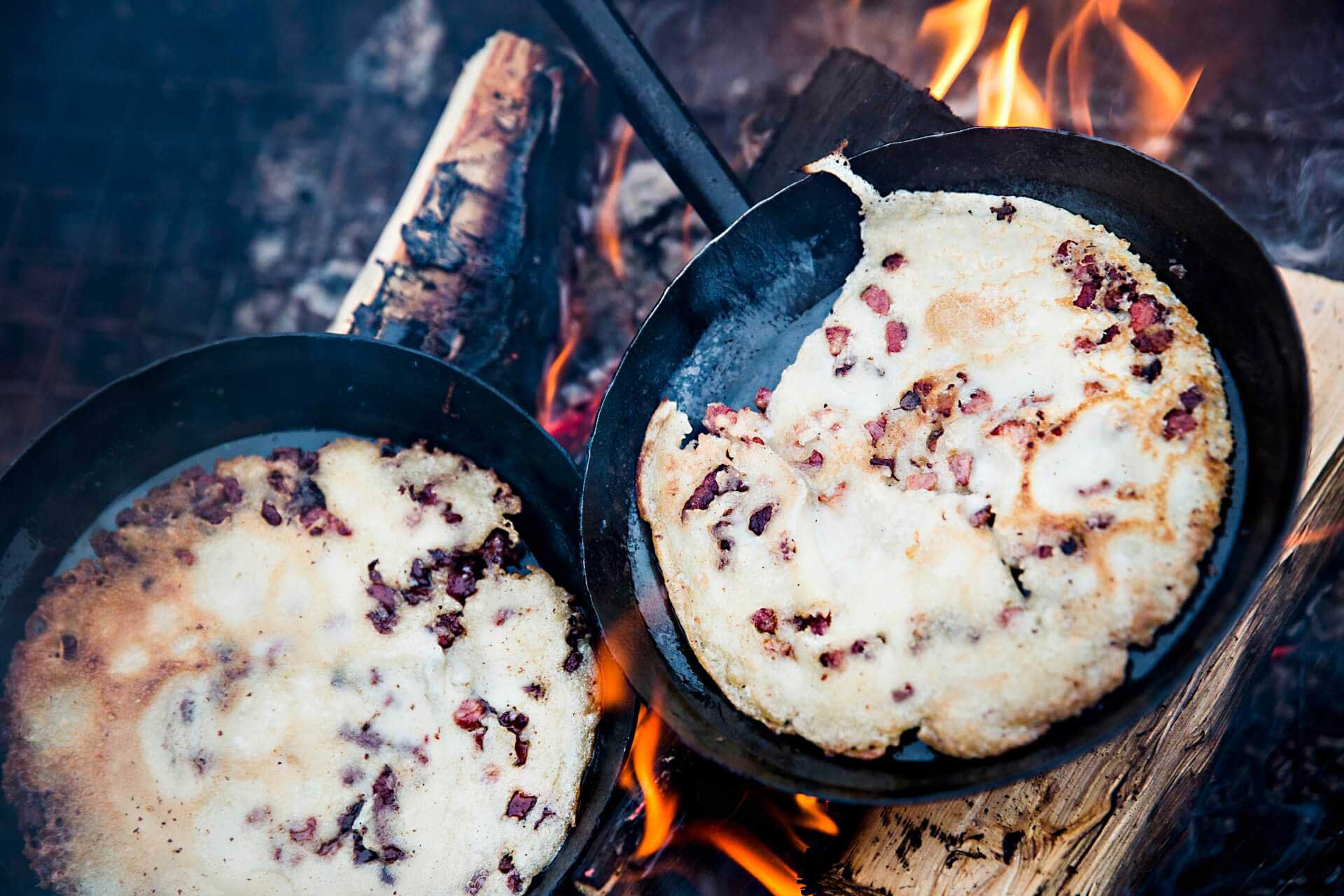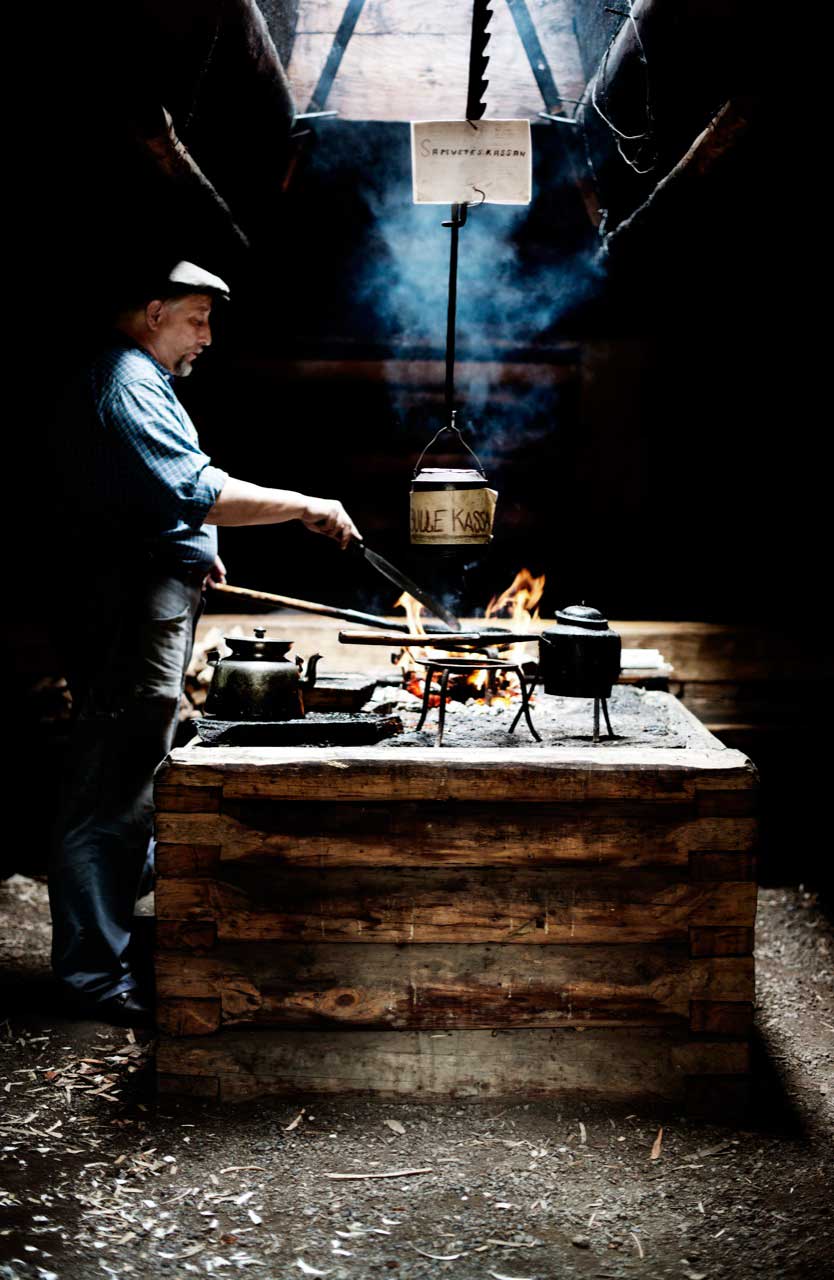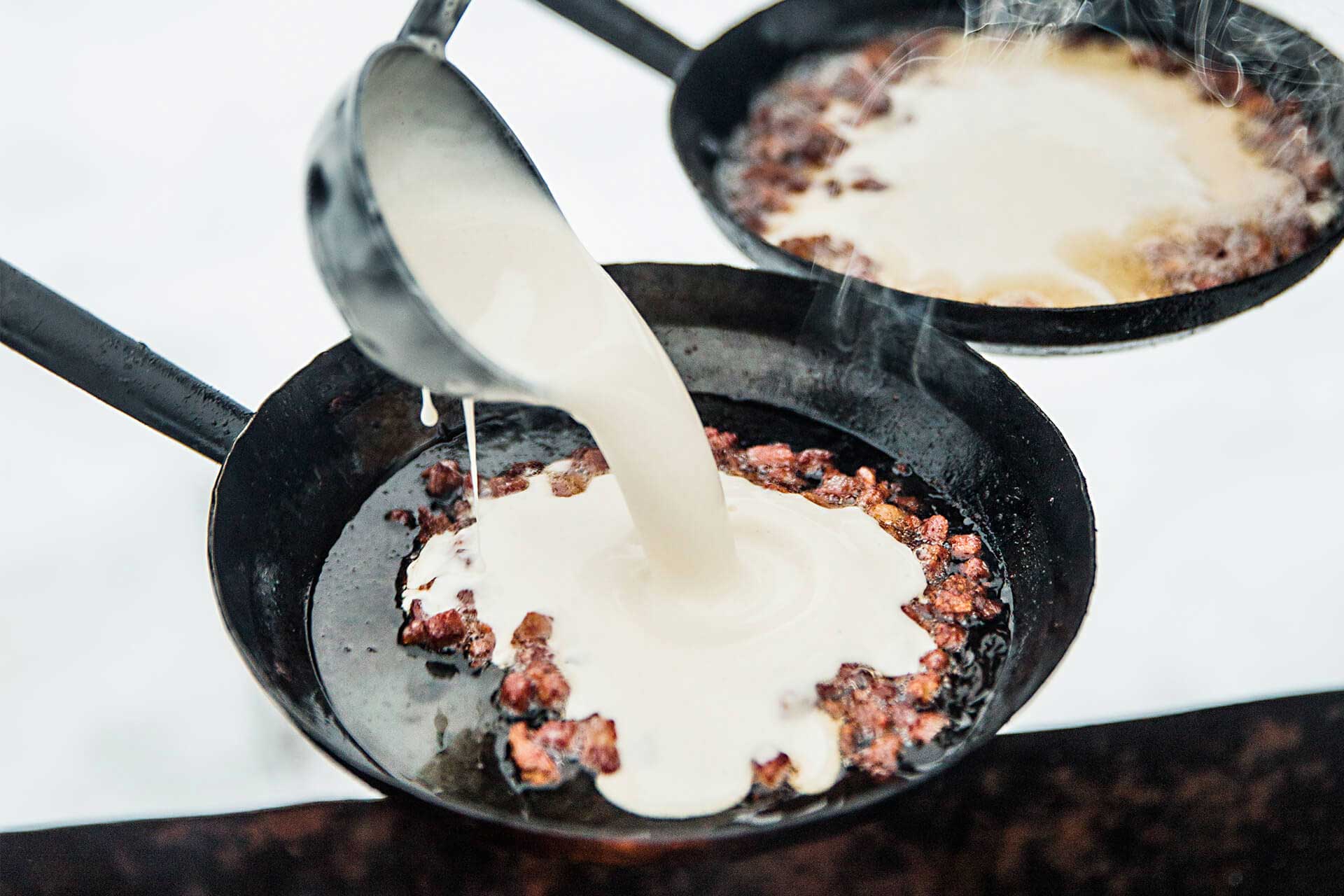Once upon a time, kolbullen was a food for charcoal burners and lumberjacks. Nowadays it is eaten on excursions and as festival food. This simple food has a rich history and many followers. This is traditional Swedish food as good as it gets.
Once upon a time, kolbullen was a food for charcoal burners and lumberjacks. Nowadays it is eaten on excursions and as festival food. This simple food has a rich history and many followers. This is traditional Swedish food as good as it gets.

It’s unclear whether Jämtland Härjedalen has a national dish, but a leading candidate has to be kolbullen – thick pancakes served with bacon and lingonberry jam. Every winter there are long queues in Badhusparken in Östersund, as young and old patiently stand in the smoke of the fires for a quarter, half or whole kolbulle with lingonberry jam. During the summer they are sold during the Storsjöyran music festival to fill the stomachs of hungry festival goers. Kolbullen are loved all year round and a great example of superb traditional swedish food.
Kolbulle is a traditional Swedish dish typically eaten by workers, thanks to its filling qualities and the richness in fat which gives plenty of energy. Kolbullen was first discovered in Hälsingland, but soon spread to Jämtland Härjedalen, becoming daily fare for lumberjacks and charcoal burners during their long periods in the forests with no access to fresh ingredients. Kolbullen were fried in the cabins over the open fire that was also the only heat source. They were often made up to three times a day; an energy-rich but unbalanced diet that created vitamin deficiencies and gum disease.
Then, as now, the batter is a mixture of water, flour and salt, preferably made a day in advance. A frying pan was heated over the fire and the bacon was fried first. Amerikafläsk was a type of salted pork that had a long shelf life; this was commonly used and was perfect for taking into the forests. This dry salted, firm pork was originally from the US, thus the name, but eventually production started in Sweden. Amerikafläsk is still available, but nowadays smoked and diced pork is often used for kolbullen. When the pork has fried, the batter – which is now thick and smooth – is added and properly browned in lard or cooking oil.
Nowadays there are probably people who turn their noses up at this stodgy pancake that pretty much drips with fat, but the traditional dish kolbullen have still survived the storms of the LCHF and Atkins diets. After all, after standing in the smoke of the fire, it is wonderful to receive piping hot kolbullen in an already greasy serviette. Salty, crispy and oh so heavenly – traditional Swedish food like it should be.

This recipe makes a batter for approximately 4 kolbullen
400 g American pork, salted pork or bacon.
600 ml water
400 ml flour
1 tsp salt
Serve with lingonberry jam.

At Jamtli History Land you can visit lumberjacks and listen to their stories of what life in the forest was like in the 1940’s. You’ll even have the chance to taste the Swedish traditional thick bacon pancake – kolbullen.